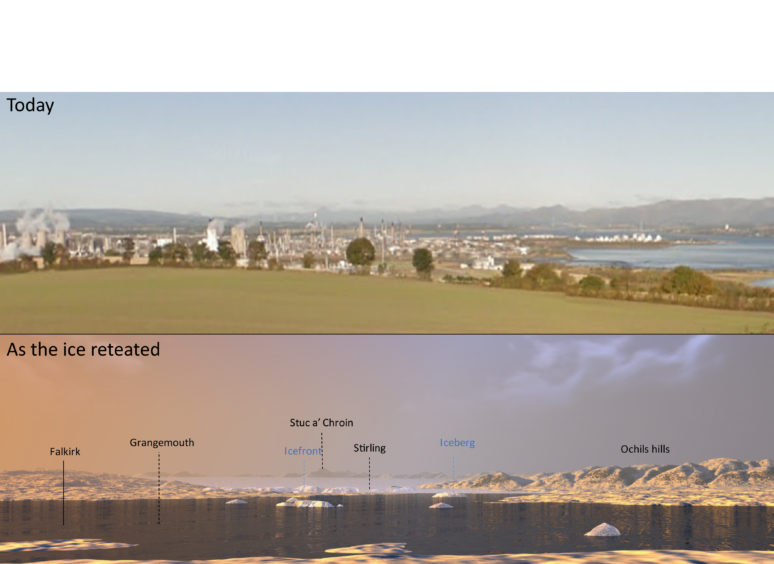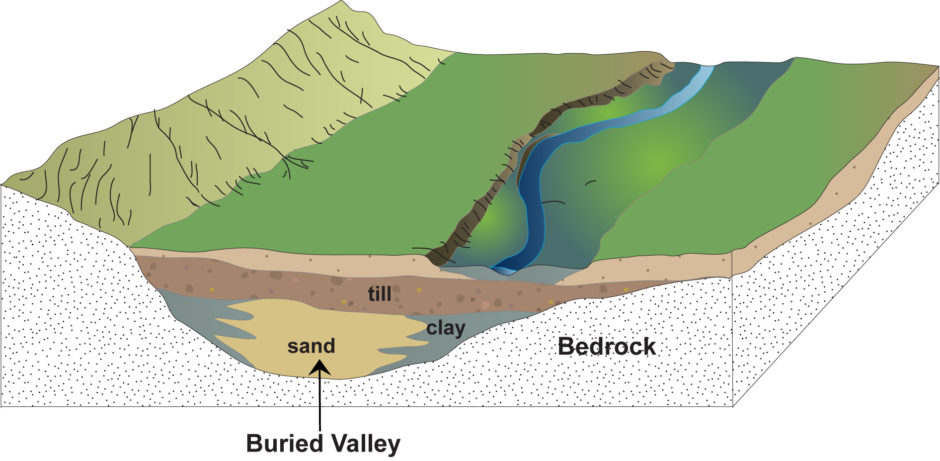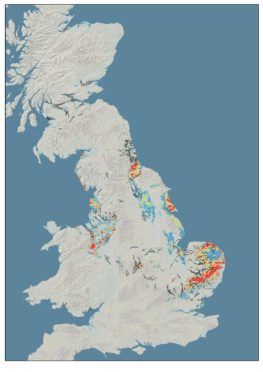A new survey has unearthed and mapped hundreds of ancient buried valleys, all the way from Aberdeen to Bury St Edmunds.
The features have been found throughout Britain and range from a valley more than 530 feet deep in Grangemouth, to a 14-mile-long valley under Melton Mowbray.
Most date from the last ice age, which ended around 11,500 years ago, an are evidence of ancient drainage networks from rivers and glaciers.
They have become partly or completely buried by more recent sediment – such as clay in the case of the massive trench beneath Grangemouth.
But they have significant modern day importance, as the sites could prove unsuitable for development, be a source of energy or even provide an excellent water source for whisky.
The British Geological Survey (BGS) discovered the valleys in Aberdeen, Grangemouth and Glasgow, Swansea, Cardiff, Newport, Newcastle and Liverpool.
Others were found in Manchester, Doncaster, Coventry and Melton Mowbray, Bury St Edmunds, Sudbury and Cambridge.
The BGS revealed that a part of a valley occasionally peeks above the surface, but more often they are completely hidden underground, with no way for hydrologists, civil engineers, planners or construction companies to tell what lies beneath.

Geologists first identified a hidden valley in the 1870s, under the river Mersey, and have subsequently collected data from thousands of boreholes across Britain.
Now the digital age has brought the opportunity to collect and collate all the information in one place and make it publicly available online.
Tim Kearsey, the BGS geologist who has been leading the project said: “Britain’s buried valleys might be underground, but they could and have had a huge impact on what happens above the surface.
“We need to know where these buried valleys are for a number of reasons. They could be a target area for shallow geothermal energy, like in Cardiff.

“They could be unsuitable places for skyscrapers or bridges to be constructed. They could cause problems for groundwater supplies, as they already do in south east England.
Mr Kearsey added: “The buried valleys are all across Britain.The whole of the Cheshire basin looks flat as a pancake, but it has lots of features underneath it.
“These probably formed under an ice sheet that covered the area 23,000 years ago.
“The deepest system is in Scotland, under Grangemouth, and it is absolutely full of clay.
“Now we know where they are, the next stage of the work is to find out what’s in all of them and whether they could be useful for providing geothermal energy – or as a groundwater source for the whisky or manufacturing sectors.”
Further information on the survey can be found at www.bgs.ac.uk/products/onshore/BuriedValleys.html.
